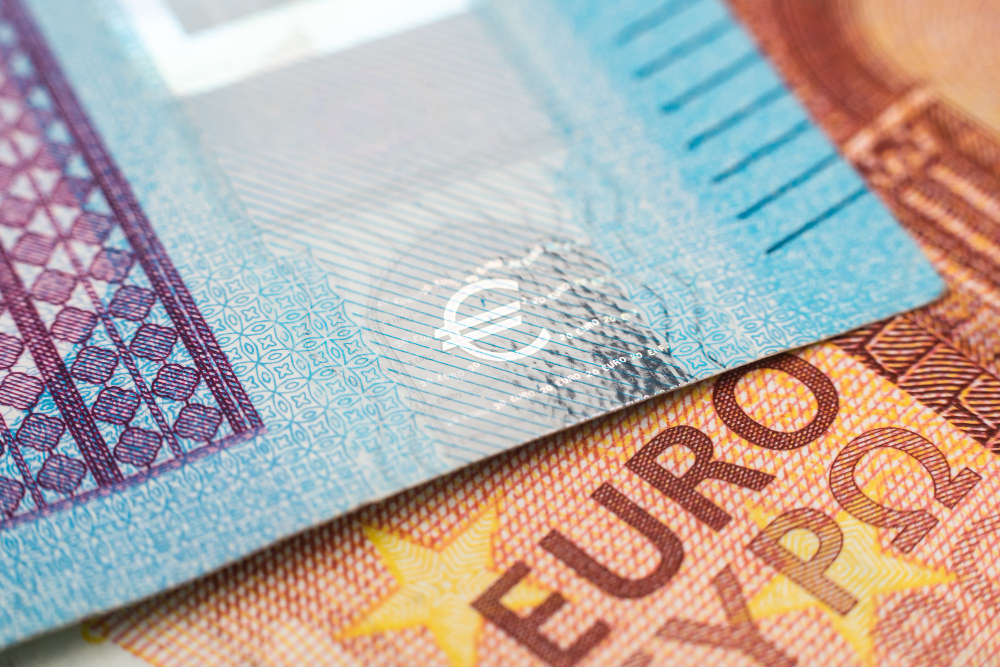On May 1, 2004, ten new states joined the European Union, including Hungary. In our series of articles, we explore how Hungary’s situation has changed over 20 years of EU membership through various indicators. This article focuses on the changes in the forint exchange rate.
In the years following our accession to the Union, the Hungarian currency was relatively stable against the euro, partly due to increased investor confidence stemming from deeper European integration. However, there were short-term fluctuations, such as the depreciation of the forint following the leak of budget data. Despite these fluctuations, the euro-forint exchange rate was essentially the same in 2004 and 2008.
Like most small and open economies, the 2008 global financial crisis resulted in a sharp depreciation of our currency. Within just a year, the domestic currency weakened by nearly 12% against the euro. Subsequently, economic policy goals changed, with the central bank utilizing both conventional and unconventional tools for devaluing the forint. The aim was to enhance export competitiveness: a weaker forint means that exporters’ revenues realized in foreign currencies are worth more in forints domestically. The Hungarian government also sought to encourage foreign investments, as a weakening forint reduces the cost of Hungarian labor (and assets) in euro terms, assuming other conditions remain constant. Additionally, the prospect for Hungarians to work abroad becomes more attractive, and Hungary becomes a cheaper vacation destination for tourists.
However, a depreciating exchange rate is unfavorable for the household and corporate sectors purchasing imported goods. Moreover, financing foreign vacations becomes increasingly expensive with a weakening forint.
The relatively stable depreciation period was interrupted by the 2020 coronavirus crisis. During global market shocks and crises, investors typically turn away from smaller, more vulnerable emerging markets and shift their funds to the currencies of stronger, larger economies. The rise in government spending led to an increase in the national debt level, and the low interest rates inevitably contributed to the forint’s nearly 8% depreciation in 2020.
After a relatively stable exchange rate in 2021, the forint weakened significantly again in 2022: that year, the euro was 9% more expensive than in the previous one. The main reasons were the skyrocketing energy prices due to the Russian-Ukrainian war and the resulting drastic deterioration in the foreign trade balance, compounded by the election spending spree that further increased the budget deficit. We all remember the exchange rate persistently above 400 forints, even reaching 430 at its weakest moments.
Those who exchanged their forints for euros fearing further depreciation during this period did not fare well: 2023 was the year of the forint’s strengthening, with the domestic currency averaging 2,4% higher in value than in the year of the energy crisis. This year, however, the forint is weakening again, losing 3,7% of its value in the first half of 2024.
Exchange Rates of Regional Currencies Compared to the Euro (2004=100%)

Source: KSH, GKI calculations (2024)
When comparing the domestic exchange rate with regional ones, the forint’s depreciation is striking. Although Romanian inflation over the past 20 years has been roughly equal to Hungary’s, our eastern neighbor’s currency only lost 23% of its value against the EU currency, compared to the forint’s 52% depreciation. A Polish zloty can essentially buy the same amount of euros as it could 20 years ago, while the Czech koruna has shown significant strengthening (+24 percentage points). Poles and Romanians work abroad in greater proportions than Hungarians, and their remittances strengthen the zloty and leu. Additionally, the conversion of EU funds to forints through the central bank works against the strengthening of the domestic currency.
To what extent does high inflation explain the depreciation of the forint?
Over the past two decades, the exchange rate between the Hungarian forint and the euro has typically reflected the inflation differences between Hungary and the eurozone. In practice, this meant that if inflation in Hungary was higher than in the eurozone, the forint’s value decreased roughly in line with this difference against the euro.
Euro-Forint Exchange Rate and the Difference Between the Price Levels in the Eurozone and Hungary (2004=100%)

Source: Eurostat, GKI calculations (2024)
In 2023, this trend broke: despite significant price increases in Hungary exceeding those in the eurozone, the forint managed to strengthen against the EU currency. The main reason for this was that the Hungarian National Bank set high interest rates to combat high inflation, thereby the favorable yields attracted money market investors, strengthening the domestic currency. Thus, by 2023, the two indicators completely diverged. This results in losses for domestic exporters, partially explaining the poor performance of export-oriented industrial production in Hungary.
Download full analysis






